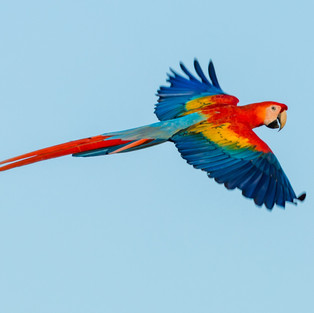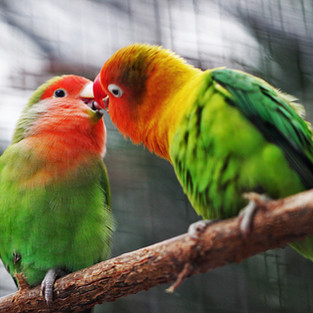Day 3 - Parrots (Home-educating - creative ideas for English and maths)
- Jamie Thomas

- Apr 8, 2020
- 6 min read
Parrots

So Joshua has chosen parrots - what an amazing stimulus! It is almost impossible not to be amazed by these colourful characters. The issue I had was that I had far too many ideas - I'm sure you will have hundreds too... but here is what we did.
Maths:
Times tables
Division facts
The definition of learning something 'parrot fashion' is that you learn it by rote. This means that you are able to recall it instantly but not necessarily with a depth of meaning and understanding. When I was at school, I remember being drilled in my times tables so that they literally rolled off the tongue. I do not remember ever really exploring the meaning through the use of manipulatives, such as counters and Numicon, as we do in great depth now. I do remember having fun making up fun raps and jingles though... and this is today's parrot-inspired learning. Here is what we did:
Initially decide on the times table(s) your children need to work on. In our case, the focus was on the 3x and 8x tables.
Next, get the children to create a 3x3 grid (a bit like a noughts and crosses grid). I am a bit of a stickler about using a ruler - it is a mathematical skill after all! The children input 9 of the times tables answers into the grid (e.g. 8, 24, 40, etc. for 8x). You can then play bingo by calling out the times table (i.e. 3x, 7x, etc.) The children have to quickly calculate the answer and mark it off. The game makes it fun and also means you can all play together, no mater what level or attainmant.
Once you have had enough of playing bingo, have fun rapping out the times tables or making up jingles. It is fun to use a backing track to a song they love and practise saying the times tables over the top...keeping to time. We used a backing track for Shake it off by Taylor Swift as it has a strong beat. Basically you just replace the words with number sentences, e.g.
I stay out too late, = 1x3 is 3,
got nothin' in my brain = 2x3 is 6
That's what people say, mmm hmm, = 3x3 is 9, mmm hmm
that's what people say, mmm hmm = 4x3 is 12 mmm hmm
I go on too many dates, = 5x3 is 15
but I can't make 'em stay = 6x3 is 18 At least that's what people say mmm mmm, = 7x3 is 21
that's what people say mmm mmm = 8x3 is 24
But I keep cruising, = 9x3 is 27
can't stop, won't stop moving = 10x3 is 30 It's like I got this music = 11x3 is 33
in my mind, sayin' it's gonna be alright = and finally, 12x3 is 36
Once they good at this, encourage them to jumble them up and not recite them in order. I thought about recording us doing this but quickly realised that our Taylor Swift impressions were not, shall we say, endearing. It was great fun though!
Follow-up activity:
The internet never fails to amaze me and nearly always comes up trumps with fun and innovative ideas. Being the father of children that are obsessed with colouring in, this was always going to be a winner.
If you visit https://www.coloringsquared.com/ you will find an amazing bank of resources all linked to all sorts of things that children will love (e.g. Minecraft, Pokemon, Harry Potter, etc.)
Fortuitously, there is a page dedicated to parrots: https://www.coloringsquared.com/?s=parrot
Here are the templates I used with my boys. There is a practise division sheet for Joshua and Archie to help them work on their division facts. Then there is also a colour by number sheet for Finley, who is 3, as he wanted to get involved and needs to work on recognising numbers above 15.
Here are some action shots of us completing our puzzles:
English (2 parts)
Part 1: Poetry:
Adjectives / Expanded noun phrases
Nouns
Verbs
Onomatopoeia
Alliteration
Rhyme
Figurative techniques
The first activity will be to continue to write some creative observational poems. The boys have really begun to tune into their use of language and poetry is such an ideal form to continue this exploration. Also, if I missed the opportunity to describe such an amazing bird through poetry with them, I would have definitely missed a trick.
Here are some cracking photos to whet the appetite.
The following exercise is totally credited to Pie Corbett. Having been fortunate enough to watch him deliver this lesson a few times, I only hope we did it justice.
Here is a very simple breakdown of what we did:
Look closely at the the parrot pictures and decide what things you want to describe, e.g. its feathers, its eyes, its talons, its beak, etc. Write these things down.
Brainstorm some adjectives about each item.
You may like to create some similes, i.e. what do the feather look like? What do the talons remind you of?
Finally, pull the ideas together into a short poem. The boys decided to write riddles, whereas I wanted to try out a 'Listen' poem I had seen Pie teach my Y6 class. Here are our poems:
The Parrot
Listen...
a siren of strangled screams
suppresses the surroundings;
marbled eyes glare,
staring with icy assurance
that belittles fools;
a blade beak
speaks in tongues of nightmares:
Death's scythe, precariously poised;
tenacious talons tear,
torturing suppressed whispers;
fuelled by the Fuhrer,
a flurry of flame
scalds searing shadows,
leaving nothing but emptiness
and silence.
© Jamie Thomas 2020
What is it?
Its dinosaur eye is as black as soot.
Its beak is like a horn, digging through you.
Its rainbow feathers change like a chameleon.
Its talons are as sharp as a lion's claws, ripping.
Its squawk is as loud as a blender, churning round and round.
But what is it?
by Archie (7)
What is it?
Its marble eyes stare.
A wavy beak squawks like a pirate's war cry.
Feathers are like a rainbow in the sky.
Hooked talons clutch.
Wings change like a chameleon.
Its head is like boiling hot lava.
Its squawk copies and teases.
But what is it?
by Joshua (9)
Part 2: Instructions:
Rhetorical Question
Imperative (bossy) verbs
Fronted adverbials (sequencing)
Precise language

Whilst in isolation, we are trying to be as creative as we possibly can. Having searched online for 'make a craft parrot' we were awash with options and ideas. Here are what the boys created.
As we made the parrots, the boys were tasked with the challenge of writing instructions to share with you all (see below). Those of you who are familiar with Talk for Writing will see the strong influence of Pie Corbett's model: How to Trap a Dragon, which we have previously learned.
Do have a go at following them and see how successful you are. We would love to see any photos or instructions of your own, which you could send to me at jamie.thomas@talk4writing.com or Tweet to @JamieWTSA
How to make a pet parrot
Do you wish you had your own pet parrot you could play with? Do you want a parrot you could teach times tables to? If so, do not worry because we have the solution for you. Follow these instructions and you too will be a parrot-making master.
What you need:
a pencil, scissors, a glue stick, goggly eyes (if you have them) and different coloured card.
What you do:
1) First, draw and cut out your parrot body. It looks a bit like a pear. You could use a template to help you (ask a parent or guardian for help).
2) Second, draw your parrot's beak and cut this out. Most beaks would be yellow or orange but this is up to you. We used yellow beaks.
3) Next, stick the beak onto your parrot. Top tip - have a scrap piece of paper underneath to avoid getting glue onto the surface (this keeps Daddy happy).
4) Then draw another beak and repeat step 3 on the other side. It should look something like this.
5) After that, cut out 8 strips of card measuring 12xm x 1cm. These will become the tail feathers. Cut one end on the diagonal.
6) Stick four feathers in a fan shape, glueing one end (see picture on left below).
7) Fold over the top 1cm (not the pointed end) and glue this onto the bottom of your parrot (see picture on right below).
8) You then need to repeat this on the other side. Remember to allow time for the glue to dry.
9) Now repeat stages 5-8 with strips of card measuring 8cm x 1cm. These will become the wing feathers (see final picture below).
10) Finally, either glue on or draw in the eyes, attach a string and then hang them up.
Don't forget to name them, ours are called Blueberry, Naughty and Squawky.
I hope you have enjoyed today's home-schooling in English and maths. If you have, please do follow us and tune in tomorrow, where the stimulus is my choice...
Clocks!
JT
















































Comments